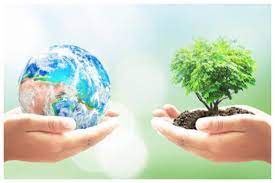Prof. B L Kaul
The first ever global gathering on the environment was held fifty years ago at Stockholm in 1972.It was organised by the United Nations out of the realization that the World was facing a serious threat due to degradation of environment and various ecosystems . “Only One World” was the slogan used for that conference.The truth still holds and is being revived in 2022. World Environment Day has been held on 5 June every year since 1974 under the auspices of the United Nations Environment Programme( UNEP). It is now the largest global event with millions of people in more than 150 countries participating. The idea is to engage governments, businesses, civil society , educational institutions, celebrities, cities and communities in raising awareness and celebrating environmental actions.
The theme for the World Environment Day this year is – Only One World- which was the slogan for the 1972 Stockholme conference. The 2022 World Environment Day, hosted by Sweden, campaigns for, “Collective transformative action on a global scale to celebrate, protect and restore our planet”, encouraging everyone, everywhere, to live sustainably and take actions on the climate crisis.
As all of us know Earth is the only planet of the Solar System bearing life. As far as our knowledge goes there is no evidence of existence of life on any other planet of the Solar System. Earth came into being about 4.54 billion years ago. It began as part of a cloud of dust and gas which originated from the Sun and has evolved into our home, which has an abundance of rocky landscape, water and atmosphere that supports life. There are huge oceans filled with many unraveled mysteries. Today life covers every centimetre of the planet from the highest mountain to the deepest sea. Scientists tell us that to their knowledge Earth is the only place teeming with beautiful living forms in the whole Universe. Can we afford to lose our home – the beautiful Earth?
Man lived in harmony with nature till the beginning of the 18th century when the Industrial revolution began in Great Britain, Continental Europe and the United States from 1760 onwards.It transformed economies that had been based on agriculture and handicrafts into economies based on large scale industry, mechanised manufacturing and the factories using coal as a source of energy.
The Industrial Revolution thus impacted the environment. The world saw a major increase in population, which along with an increase in living standards, led to the depletion of natural resources. The use of chemicals and other raw materials in factories resulted in increased air and water pollution and an increased use of fossil fuels. Industrial activities powered by coal and fossil fuels thus became the major source of pressure to the environment in the form of carbon, nitrogen and sulphur emissions to the atmosphere and aquatic ecosystems, besides waste generation and resource depletion. The effects of use of coal as an industrial fuel were felt as early as 1830 in London where concentration of particulate matter in the atmosphere had risen dramatically.
With an awareness that there is “Only One Earth” to live on and nowhere else to go it is imperative for us to take steps like Reduce,Reuse and Recycle to bring down pollution levels and improve the quality of our air and water. The major sources of pollution like the coal and fossil fuels are producing greenhouse gas emissions, wrecking havoc across the world and resulting in climate change. It is imperative to find alternate sources of energy, stop cutting down forests and start aggressive afforestation programmes and stop using plastics.The plastic waste is causing severe health consequences all over the world. The flow of plastic waste from deep inland to the oceans is posing a grim threat to the marine life.
There are nearly Eight million species of plants and animals including man living on mother Earth . They are facing the consequences of environmental degradation. The rich biodiversity requires healthy and sustainable ecosystems which are under great threat. According to UN Convention on Biological Diversity there are five main threats to biodiversity. In descending order these are:
* Changes in land and sea use.
* Direct exploitation of natural resources.
* Climate Change.
* Pollution and
* Invasive species( species introduced from other parts which disturb the native species for example Chinese Carp in Kashmir) .
One perceptible impact of climate change is the melting of glaciers at a fast pace. Melting glaciers add to rising sea levels, which in turn increases coastal erosion and elevated storm surge as warming air and ocean temperatures create more frequent and intense storms like hurricanes and typhoons.
Another possible impact of melting glaciers is that the water supply will diminish and farms, villages and cities might lose a valuable water source. Melting glaciers can affect river runoff, and thus freshwater resources available to human communities, not only close to the glacier but also far from the mountain areas. This is particularly true of the Himalayan rivers on which depends the food security of the Indo- gangetic plains. Low water levels in these rivers will directly impact agriculture and life in villages and cities around them.
We may ask ourselves whether we can help to save “Only One Earth”. Yes certainly we can. There is no other choice but to do something if we love our mother Earth. There are ten simple things to do and follow them strictly :
* Reduce, reuse, and recycle.
* Volunteer to clean up in our community.
* Educate others about importance of clean environment.
* Conserve water.
* Shop wisely. Use a reusable shopping bag. Say no to plastic bags.
* Use long- lasting light bulbs.
* Plant a tree.
* Don’t send chemicals into our waterways.
* Walk and bike more. Drive less.
* Make good food choices.
( The author is an educationist and Environmentalist)
Trending Now
E-Paper


